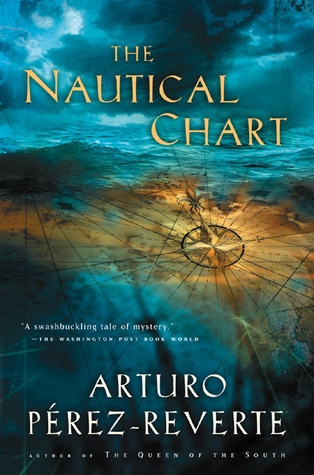For the fifth time, Señor Pérez-Reverte, the Spanish novelist and international journalist, has presented “a novel of suspense” that adheres to his formula, and this may be his best yet, or at least his longest. The length of this ironic romance is significant; since the author works within a narrow scope and with a small cast of characters (four or five rogues are the ones that count), he is therefore compelled to build up his text with discursive elaboration and imaginative extensions. Like Raymond Chandler, this Hispanic master could fairly claim that he “writes writing,” and again like Chandler, he does quite a job of it.
Because the field is restricted, the final revelation must be somewhat predictable, for on this checker board, there is only one move left at the end. But I register no complaint, for there are few living writers to whom I unconsciously plead, “Don’t stop!” as they cast their spell. Pérez-Reverte is some kind of magician, all right, but that does not mean that his technique cannot be analyzed. In recognition of, and as a punishment for, his success, he has already been announced as a special topic at the next convention of the Modern Language Association, so we must proceed now to indicate something about his formulaic procedures before he is tarred with the brush of the Male Gaze in a Discourse of Power and the Subversive Strategies Necessitated by a Hetero-Normative Society and the Eurocentric Pathology of Iberian Narcissism, and all the rest of the prospect at which I shudder.
A preliminary sketch of the Pérez-Revertean formula would include the following points, at least. The plot must be grounded in Europe, preferably in Spain. The conflict has to do with a struggle, usually between a man and a woman and others, over possession of a disputed object which is itself a pretext for learning the arcane knowledge it represents. So the struggle becomes an education both in the history and culture represented, and in the characters of the antagonists. The most remarkable property of this formula is that it requires extensive knowledge of, and respect for, the past. And I frankly am unaware of anyone actively writing today who has the imagination as well as the mastery of detail required to pull off what Pérez-Reverte dares.
The disputed object this time is the novel’s eponym, as Coy, the marooned sailor, helps the mysterious Tánger in her struggle to locate a shipwreck and its treasure before it is found by the sinister “ponytail” and his henchman, the melancholy dwarf. To accomplish this requires detailed knowledge of Spanish politics of over 200 years ago and detailed knowledge, as well, of the evolution of navigation. And we cannot deny that Coy’s desire to know Tánger biblically is another epistemological investigation that is related to the others.
So far, so good; we have been here before in the works of Robert Louis Stevenson, Dashiell Hammett, Gavin Lyall, and many another, which brings us to the second part of the Pérez-Revertean formula: The text is aware of itself in a way that is both postmodern and traditionally romantic. We should remember here that “romanticism”—for Byron and for Melville, among others—entailed a bracing amount of “romantic irony” or self-referentiality, and so what’s old is new. The protagonist Coy is continually aware, either in memory or in immediate reference, of every analogue to the adventure he is caught in. These include not only the tradition of cloak-and-dagger thrillers (Jules Verne, etc.) but also of a higher plane of nautical romance represented by Melville, Conrad, and so on. In addition, there is a sly allusion to Pérez-Reverte’s own The Club Dumas in The Nautical Chart, as though the author tipped his hat not so much to himself as to Vladimir Nabokov. Of course, there are also the postmodern aspects, such as the pointed references to Popeye and Bluto and to the adventures of Tintin and various movies. Popeye the Sailor Man is more than a cartoon in this context, because there are at least two episodes in which Coy physically attacks his enemies in such an imprudent fashion that we are forced to realize that he has been overcome by his Popeye self. I will only add that, like the greatest authors (Homer, Shakespeare, Chandler), this young Spanish master pays an informed and proper attention to the ritualistic ingestion of alcohol—gin and tonics, this time. The man has good values—in his books, men are erotically attracted to women, the past is real, culture is respected—which means that, in our present regime of inversion, he will inevitably be attacked for them. But not by me.
Quite the opposite, in fact. Because he is faithful to the restrictions of his formulas, Pérez-Reverte has found freedom within them. He rises to the challenges he sets for himself with remarkable wit and imaginative resource. He has a gift of eloquence that comes through in translation and an unfailing sense of rueful humor that is both hip and Hispanic. So if I say that his books are delightful, I mean just that: full of delight. The Nautical Chart is both fun and funny and, as an ironic romance, dead serious as well. If you can find a better book, read it. Otherwise, read this one.
[The Nautical Chart, by Arturo Pérez-Reverte (New York: Harcourt, Inc.) 466 pp., $26.00]

Leave a Reply